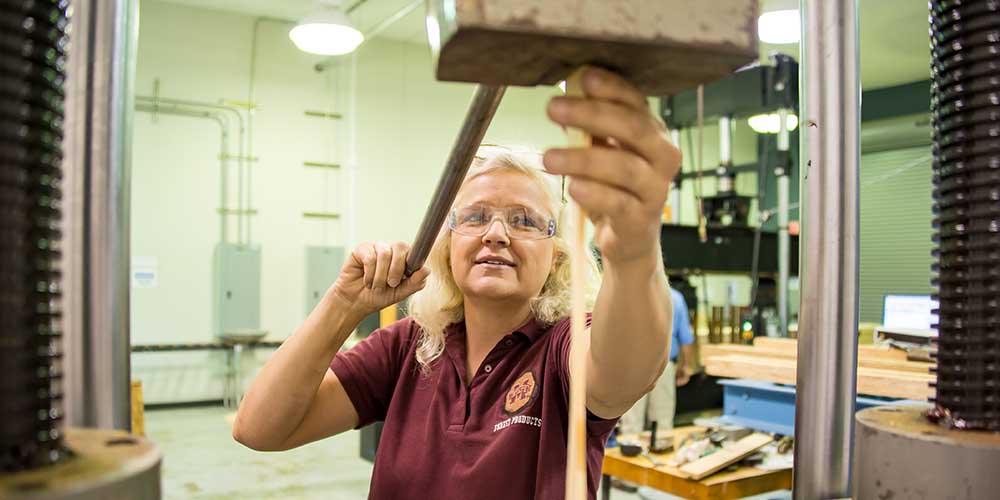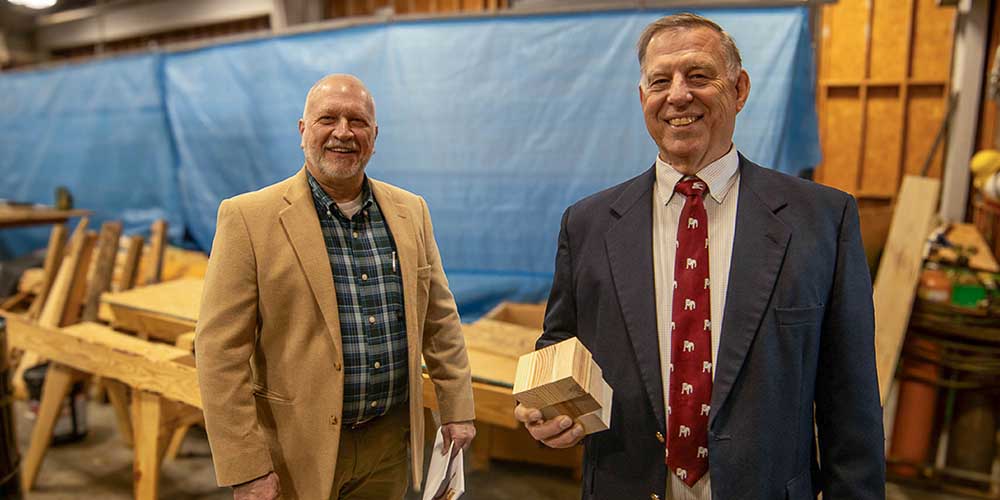Building Materials and Composites Stories

Insight into Pine
Dr. Dan Seale, professor, and Dr. Rubin Shmulsky, professor and department head of the sustainable bioproducts department, both FWRC researchers, led a five-year study evaluating over two thousand pieces of southern yellow pine lumber on several traits. This study resulted in the development of an app designed to help carpenters better evaluate the strength and quality of individual pieces of lumber in a consumer setting. Several graduate students were involved in the study, including Frederico Franca, who accepted a position as assistant research professor in the department. Franca planned to apply the research to a staircase study in hopes of partnering with the Stairbuilders and Manufacturers Association to create a certification system for lumber used in staircase construction.
2017

Market Barriers
Dr. Dan Seale, a professor in Mississippi State's Forest and Wildlife Research Center, is working to increase the value of undervalued hardwood species like yellow poplar and sweet gum. Through a USDA Forest Service grant, Seale's team has created a database mapping area in the eastern U.S. with high volumes of these species, helping mills locate ideal spots for processing facilities. The goal is to improve the economic value of Mississippi's timberland by finding new uses for these woods. Keith Ward, a doctoral student, is analyzing the suitability of these hardwoods for engineered wood products like I-Joists and structural panels. By developing markets for this timber, the research benefits landowners, mills, and the broader supply chain, creating jobs and boosting the economy.
2023

Using the Resources
Dr. Mostafa Mohammadabadi, an assistant professor at Mississippi State's Forest and Wildlife Research Center, is researching ways to utilize small-diameter and underutilized materials (SDUs) in forests, which are often left unused due to high transportation costs. By developing products similar to cross-laminated timber (CLT) and glue-laminated timber (glulam), SDUs can be repurposed for construction, reducing wildfire fuel and preventing carbon emissions from burning. These wood products are carbon-negative, as they continue to store carbon even after being cut. This research aims to improve forest health, create a market for SDUs, and support sustainable forest management practices. The project also emphasizes education, inspiring students from diverse disciplines to contribute to creating green solutions in forestry and construction.